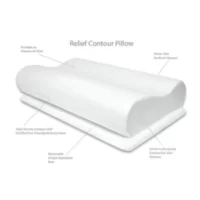Neck Pain Causes
Common Causes of Neck Pain
Neck pain is a widespread issue that can affect your daily activities. It ranges from mild discomfort to severe, debilitating pain, and is often linked to various neck pain causes, including muscle strain, poor posture, or injuries. Left untreated, neck pain can interfere with your quality of life, making it difficult to move your head or perform everyday tasks.
Anatomy of the Neck
The neck or cervical spine consists of seven small vertebrae that support the head. It includes muscles, joints, discs, and nerves that work together to enable movement and stability. Understanding the structure of the neck helps explain why certain factors lead to neck pain causes, such as neck joint injuries, facet joint pain, or wry neck.

Neck Pain Causes
Neck pain causes are unique to the individual but there are some common contributors:
- Muscle Strain – Often due to overuse, such as spending long hours hunched over a computer or smartphone. Muscle strain can lead to muscle-related injuries, like neck sprain.
- Poor Neck Posture – Sitting or standing with poor alignment can put strain on neck muscles and joints, contributing to conditions like text neck.
- Whiplash Injuries – Sudden movements, like those in car accidents, can cause whiplash, leading to neck strain or sprain.
- Degenerative Neck Conditions – As you age, the cervical discs can wear down, leading to conditions like degenerative disc disease or bulging, or herniated discs. Likewise your facet joints and bones deteriorate resulting in cervical spondylosis.
- Pinched Nerves – A compressed nerve in the neck can cause radiating pain, often felt down the arm, commonly known as cervical radiculopathy or nerve-related/referred arm pain.
- Cervicogenic Dizziness – Neck pain linked to dizziness or balance problems is referred to as cervicogenic dizziness.
- Occupational Factors – Repetitive motions, heavy lifting, or awkward positions at work can trigger neck pain. Consider an online office ergonomic assessment for workplace adjustments.
- Other Neck Pain Causes – There are multi-source neck pain causes that can indirectly or directly cause neck pain. Some of these occur without a known injury but it is important to address these components for successful neck pain management.
Neck-Origin Headaches
Neck-origin headaches, also known as cervicogenic headaches, are caused by issues in the neck, such as muscle tension, joint dysfunction, or nerve irritation. These headaches typically start at the base of the skull and radiate to the forehead, temples, or behind the eyes. Poor posture, prolonged sitting, or neck injuries can trigger these headaches. Physiotherapy treatments, such as targeted exercises and manual therapy, can effectively reduce symptoms by addressing the root cause in the neck.
Risk Factors
Several factors can increase your risk of neck pain, including poor posture, prolonged computer use, stress, and ageing. Bone-related injuries like osteoporosis, spinal stenosis, spondylosis, or scoliosis are also common in older individuals. Athletes who engage in contact sports are at higher risk for conditions like facet joint pain.
When to Seek Medical Advice
If your neck pain is accompanied by symptoms such as numbness, weakness, or persistent headaches, it’s important to seek medical attention. These may be signs of more serious conditions, such as herniated discs, or other disc-related injuries. That is why profession assessment to determine your neck pain causes is important.
Read more: When is Neck Pain Serious?
Diagnosis and Tests
When visiting a physiotherapist or healthcare professional for neck pain, you may undergo a physical examination, along with imaging tests like X-rays, MRIs, or CT scans to identify the root cause. Your physiotherapist will assess your range of motion and determine any nerve pain or muscle issues contributing to the condition.
Treatment Options
Treatment depends on the cause of your neck pain and may include physiotherapy, massage, or in severe cases, surgery. Common conditions like wry neck may respond well to targeted physiotherapy exercises, while others, such as ankylosing spondylitis, fibromyalgia, or rheumatoid arthritis may require additional medical intervention.
Prevention Strategies
Preventing neck pain starts with good posture. Ensure your work environment supports proper alignment, and take regular breaks if you sit for long periods. Posture improvement products and ergonomic chairs can help prevent future issues.
Long-Term Management
Chronic neck pain requires ongoing management through lifestyle changes, regular physiotherapy, and exercise. Incorporating stretches and exercises into your daily routine can help maintain flexibility and strength, reducing the risk of pain recurrence. Neck pain products such as neck pillows and supports may also assist in managing discomfort.
Latest Research on Neck Pain
Teichert et al. (2023) conducted a systematic review and meta-analysis, finding moderate-certainty evidence that physiotherapy exercises reduce the risk of neck pain within 12 months. The review included five trials with 1,722 participants, mostly office workers, comparing exercise interventions to minimal or no intervention. The results showed exercise nearly halved the risk of neck pain (OR 0.49, 95% CI: 0.31, 0.76). Despite some sensitivity concerns, the study supports physiotherapy exercises as an effective short-term prevention strategy for neck pain.
What to Do Next?
If you’re experiencing neck pain, seek advice from your physiotherapist. Early intervention can help prevent long-term problems and improve your quality of life. A physiotherapist can create a personalised treatment plan to address your specific needs.

































































